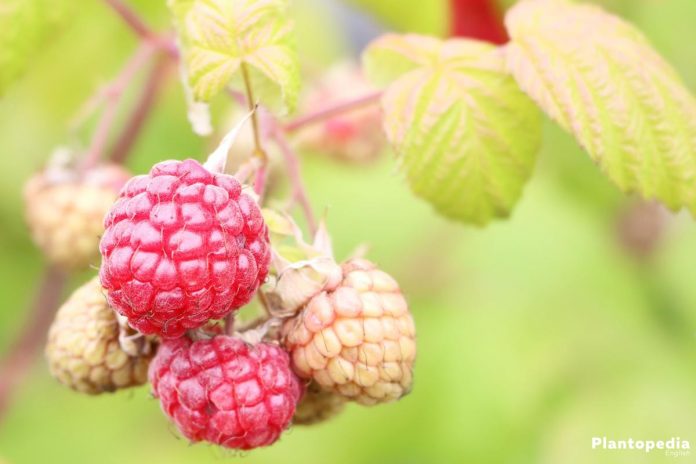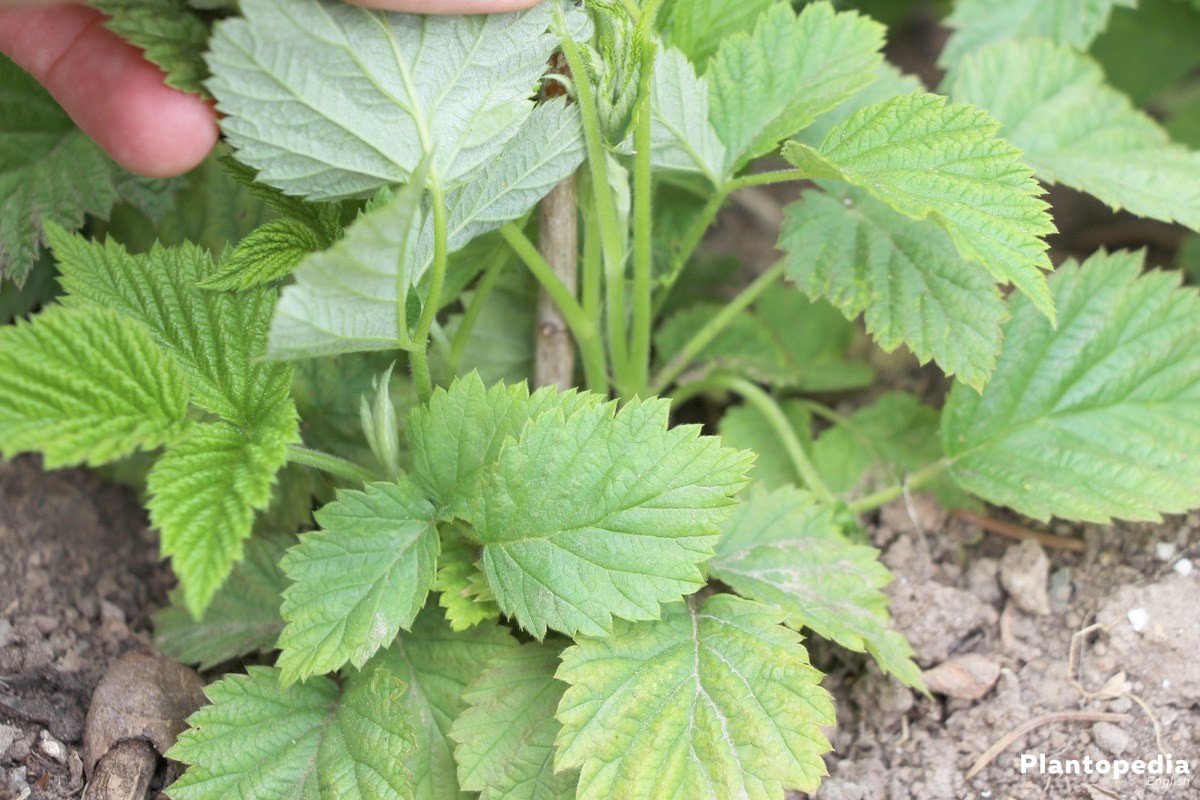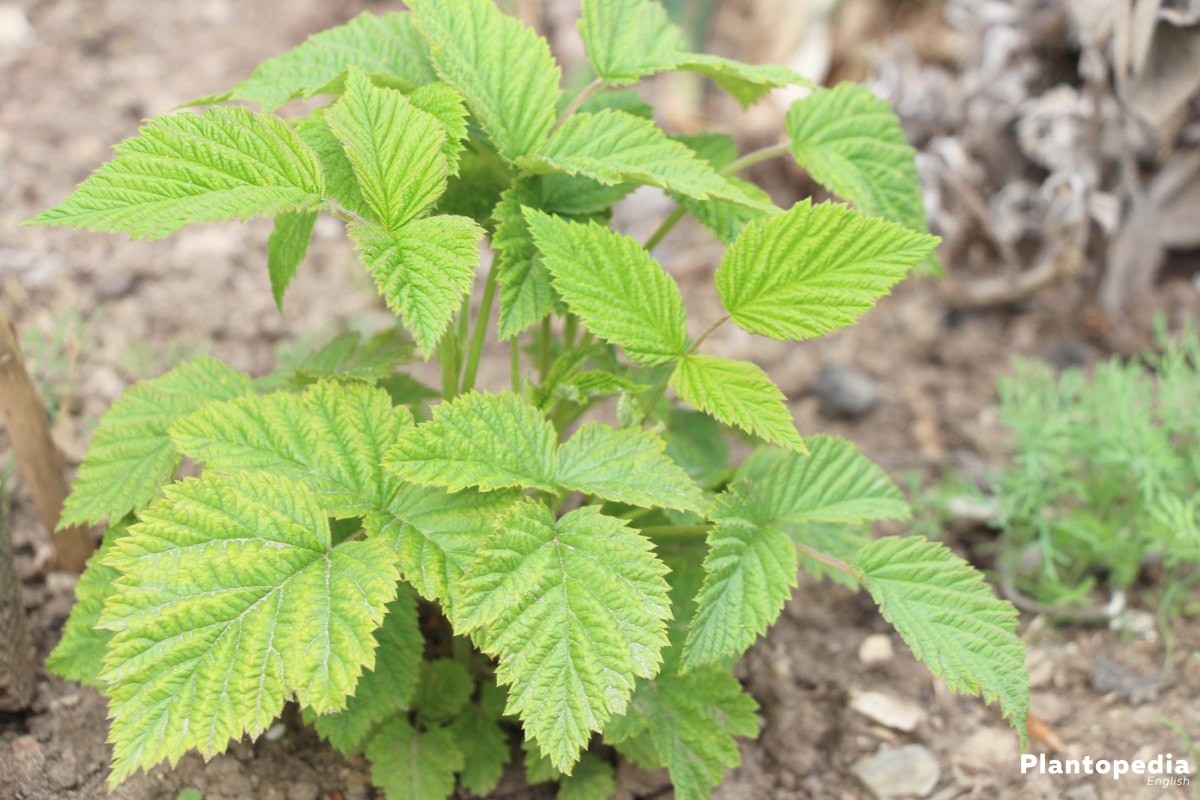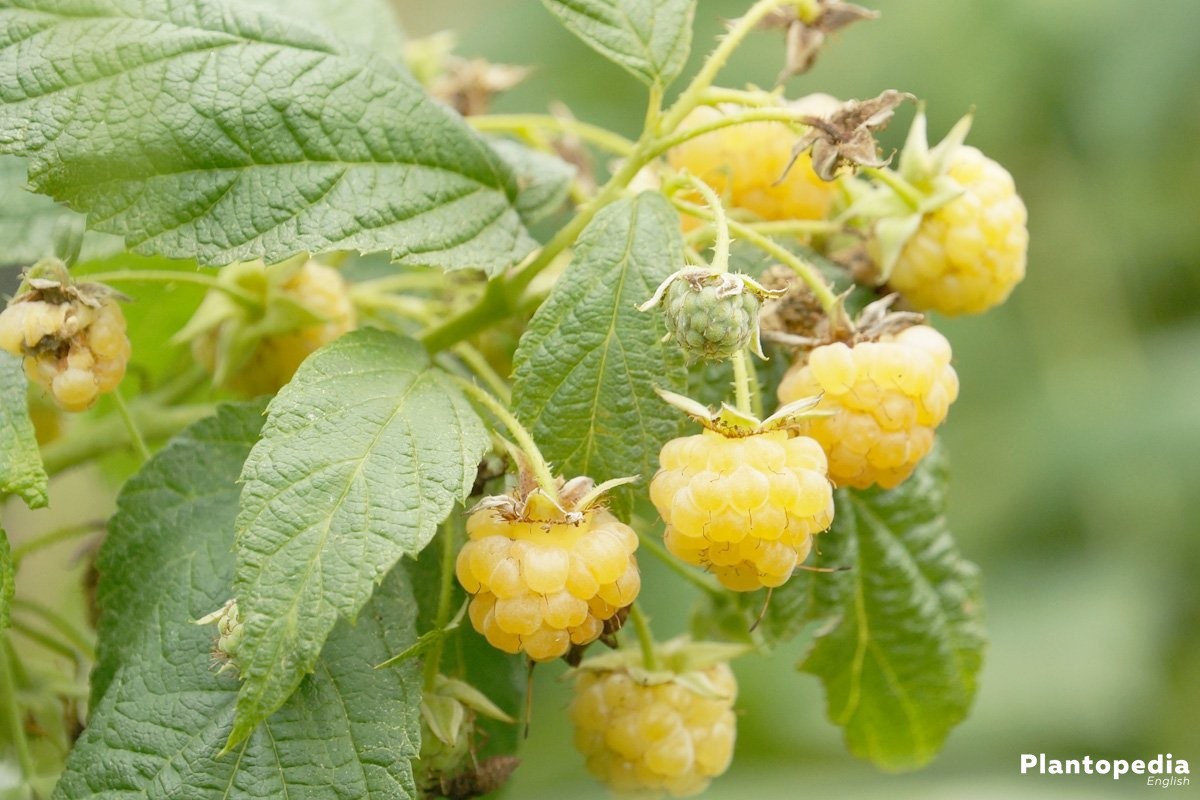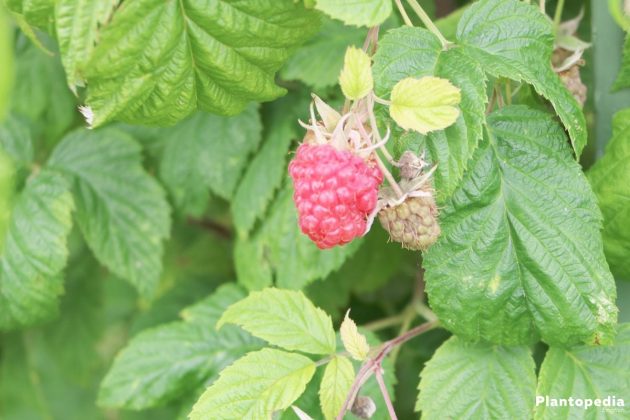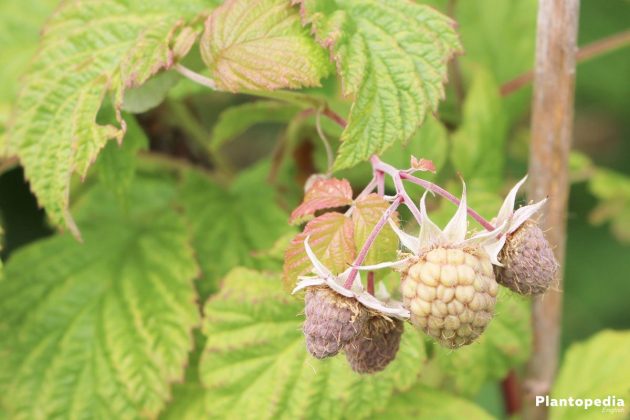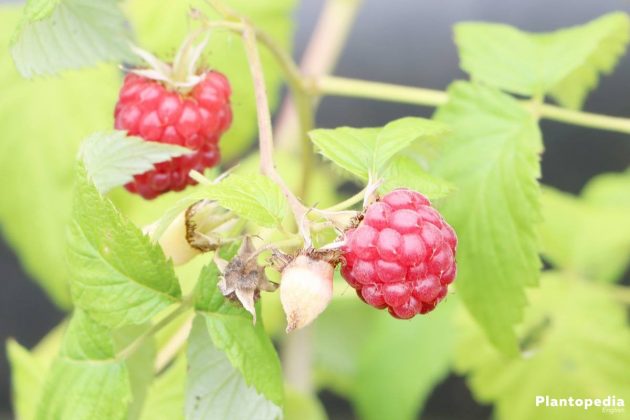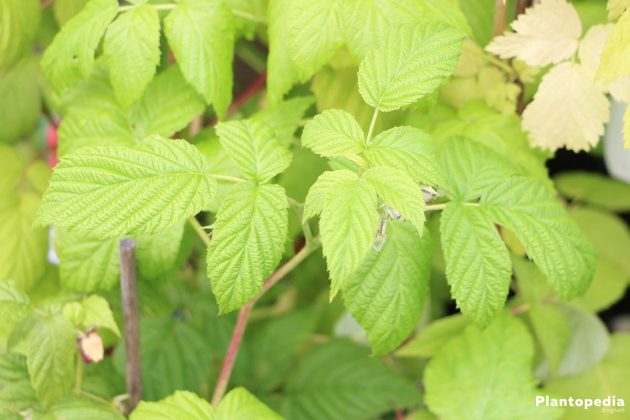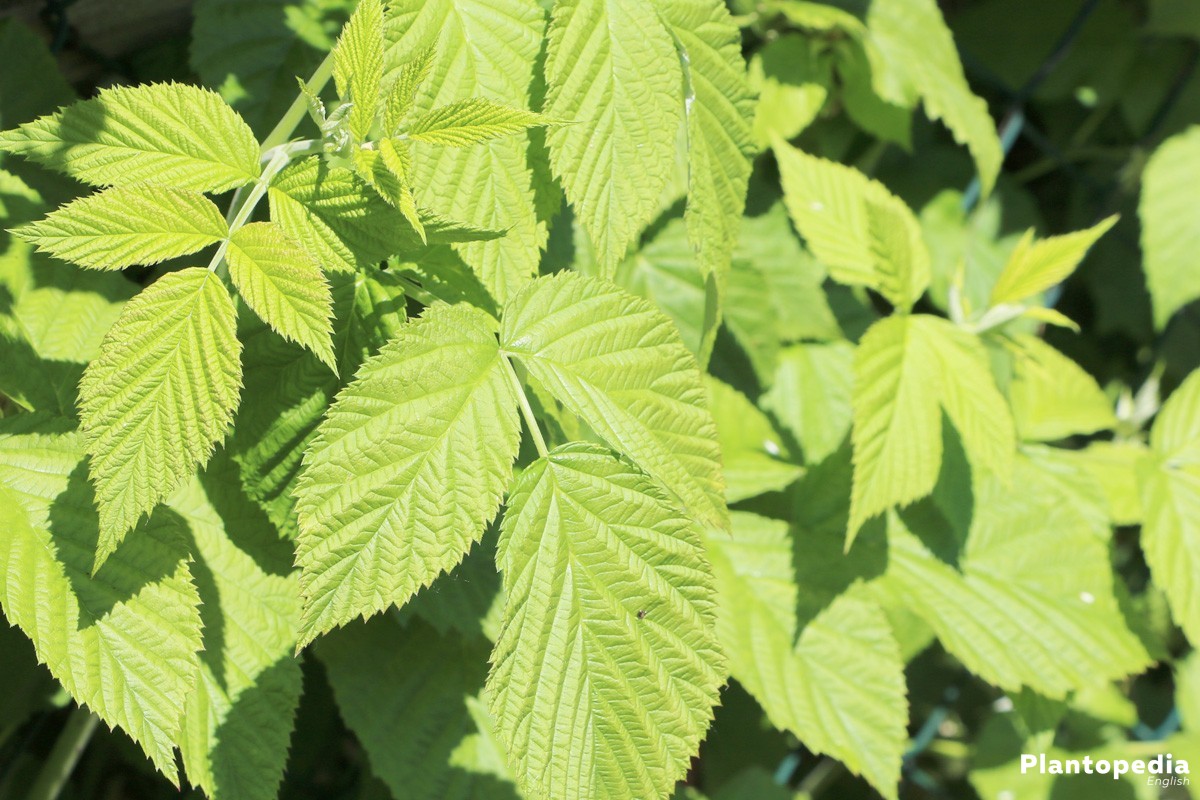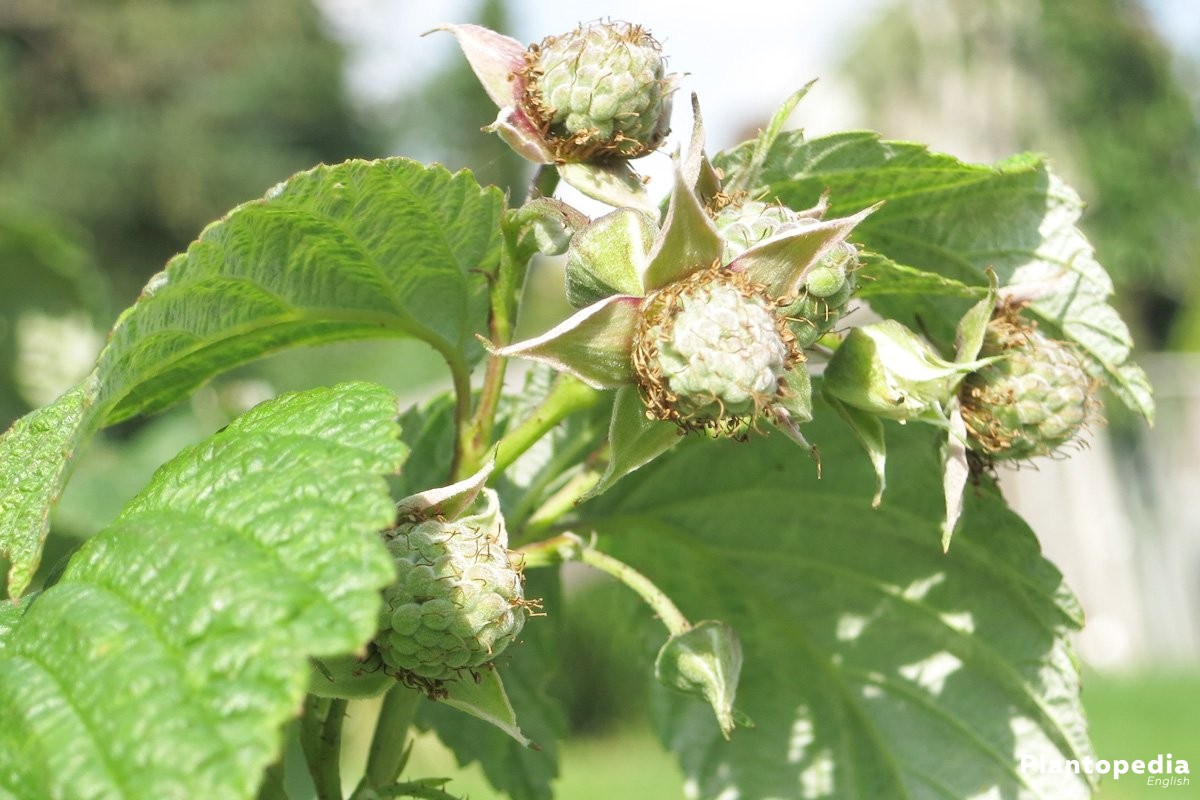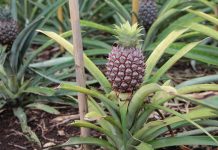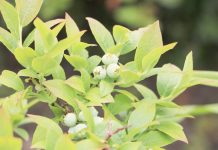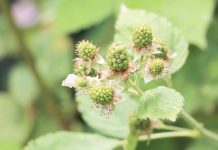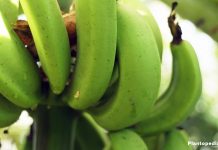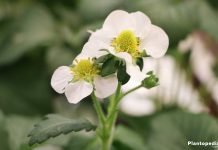Self cultivated Raspberries beat the fruits one can gather in the forest in every aspect. Whoever combines the modern summer and autumn varieties, stretches out the harvesting period of juicy sweet berries to a few months. The requirements to Planting, Care and Cutting are less complicated than it seems. This instruction leads you step by step through a successful cultivation of the long lasting berry shrubs.
Plant Profile
Contents
- summer green shrub inside the family of the rosaceous plants
- raspberry as a planting variety of the sub genus rubus
- climbing stems with 60 to 200 cm long, low lying vines
- rods with opposite pinna leaves and fine thorns
- white blossom panicles from May to August
- harvesting start of the summer summer varieties toward the end of June/the start of July
- harvesting start of the autumn varieties toward the start/middle of August
- first flowering and harvest from the start of the second year
- winter hardy and long-lasting up to 10 years
They thrive as juicy sweet fruit candy on decorative blooming shrubs. In order to snack fresh Raspberries or produce aromatic specialties, one does not have to to go on a berry harvest in the forest. Thanks to modern crops, you can cultivate the valuable vitamin bombs which are superior to the wild Raspberries regarding taste and fruity volume.
Care
A sunny location with nutrient rich, loosened to permeable soil fulfills half the requirements. Summer and autumn varieties guarantee a month long fruit pleasure. Read here, how to successfully plant Raspberries, care and cut them for a rich harvest in premium quality.
The summer and autumn raspberry varieties are not only different concerning their flowering and harvesting period. Furthermore, the later varieties trump with their high resistance against diseases and parasites. Moreover they blossom and fruit on the one year as well as this year’s shoots, which especially makes the cultivation easier for beginners.
Planting
Even though Raspberries are self fertilizing, the pollination of adjacent varieties proves as virtuous for rich blossoming and harvest. Please choose quality plants from a brand tree nursery because offshoots from befriended hobby gardeners could be infested from non visible diseases.
Plan at least two berry shrubs for the planting as well as easy education systems as the shoots might have thorns, but not adhesive organs. All relevant details surrounding the exemplary planting are summarized in the following.
Location
One of the carrying pillars for a successful cultivation of Raspberries is the choice for the right location. Please pay special attention to the following framework conditions.
- sunny and half shady location for summer varieties
- full sunny location for autumn Raspberries
- ideally warm and wind sheltered
Do not regard beds which have carried Raspberries in the last year. A crop rotation of four to five years is preventing soil weariness with its negative effects. After a standing period of up to 10 years, Raspberry shrubs will have depleted the ground to such an extent, that a cultivation period of at least four years is inevitable.
Soil conditions
Raspberries will meet all expectations in nutrient rich, humus and fresh soil. This is especially true in permeable soil, as water logging can result in a premature end of shallow roots. Perfectly suited for the cultivation of Rubus idaeus is a bed with a pH value of 5, 5 to 6, 5. Where the soil conditions are far away from the ideal conditions, aids and remedies can make up for possible lacks of requirement.
Thickened substrate which is simultaneously too wet contains sand and foliage soil and thus has a loosened, permeable structure. Too sandy, meager soil is optimized with ripe compost or bark humus. The adding of moor bed earth has a reductive effect on the pH value.
Planting time
The autumn, with its start in the middle/end of September until the start of November, is the ideal planting time for Raspberries. At this point in time, the soil has still saved the summer’s warmth which offers ideal starting conditions to the young roots. From the start of winter, the rooting is finished, so that Raspberry shrubs are starting with a vital growth boost into the season.
The autumn period is a fixed planting time is not certain however. The spring is a viable alternative, as soon as the soil is fully defrosted and a temperature of 10 degrees Celsius dominates.
Climbing aid
As the vines are missing special adhesive organs, Raspberry shrubs are getting a climbing aid. In the process of the planting process, all shoots are being fixated on them as they otherwise grow, bloom and fruit on the ground. Sufficient is a simple construction out of 1,50 m high wooden posts with wires spanned through them.
Please fixate the tension wires with a distance of 40, 80 to 120 cm. If you want to grow Raspberries in several rows, measure a distance of at least 150 cm so that there is enough space.
Planting technique
After you have dug up the ground with a spade and the education system is fully built up, dig up planting holes with a distance of 50 cm. Add foliage compost, bark humus and berry fertilizer to the planting hole. Meanwhile, every potted in root bale is being soaked in water until no bubbles rise up.
This is how you proceed:
- line every planting hole with a root barrier out of stable pond foil or geo textile which cannot rot
- place in a centered position a water soaked, stuffed out Raspberry shrub
- if possible, maintain the former planting depth, tightly press the earth and water
- cut all rods to 30 cm, maximal 50 cm in length
Mulch the bed with a height of five centimeters with grass cut, comfrey roots, fern herbs, foliage compost or pine needles. It is important for the growth, that you do not place a young Raspberry in a deeper position, as it was positioned in the propagator. The root disc should be covered with earth only very thin or not at all, in order to spread out a mulch layer over it.
It has proven true in daily garden experiences that the planting on a tiny hill has a preventing effect regarding root rotting and diseases. Spread out along the vine aid a wall with a height of 30 to 50 cm consisting out of nutrient rich, humus soil in order to place all of the Raspberry shrubs inside.
Watering
As Raspberry shrubs as shallow roots are not entering into the deeper lying water layers, regular watering is important. Immediately following the planting in the event of dry conditions, it should be watered daily, until a fresh shoot signalizes the successful course of root growth. Check, by thumb, the substrate in a frequency of two to three days.
If the upper cm two centimeters are dried off, the plants should be watered. After the blossoming until the start of the harvest, water needs are increasing so that daily controls are inevitable. A balanced soil moisture should be the goal as dryness as well as soil wetness are impacting growth and vitality.
Fertilizing
Raspberries, as strong uptakers are requiring an additional supply of nutrients. In order to enjoy the juicy fruity fruits, organic fertilizers are included into the focus. Aside from the quality of the fertilizing material, the time concerning the duration is relevant.
This is how you take care of the topic of caring in the right manner:
- in May/April fertilize with foliage compost, horn shavings or with well rotting pig manure
- in June, fertilize organically once more
- additionally shower the organic fertilizing material with potassium rich comfrey liquid manure
Where there is no access to organic fertilizer, use in April and June a special berry fertilizer. This is being spread with a dosage of each 60 to 80 grams per square meter, raked into the surface and has to meticulously watered.
Weeding
Within the first two years, young Raspberry shrubs are in a constant competition with weeds. As a result of the flat root system, a regular weeding takes an important part in the care program. In order not harm the roots, ideally pluck out the weeds by hand. On bigger bed areas, please rake as beautiful as not to damage rods and roots.
Every wound, however small. Can be used by fungal spores and parasites as an entry point. The recommended mulch layer is also contributing to suppress weeds. Alternatively, a black mulch foil replaces the natural mulch material so that the visual appearance is not being negatively affected in the bed.
Cutting
While summer and autumn Raspberries are working together regarding summer and autumn Raspberries regarding location, planting and care, this is not true for the back cut. There are differences to adhere to regarding the date and the incision.
This is how it is done:
Summer Raspberries
The target of the cutting measures is to cultivate per meter 10 to 12 healthy and high yield vines. As soon as the rods have reached a growth length of 20 to 30 cm, this is the perfect time for selection. Weak, sickly shoots are being cut on the base. Immediately remove all worn off vines near the ground immediately after harvest on a Raspberry shrub.
The rods of this season stay untouched as they bloom and fruit in the next year. These shoots are instead being fixated on the creep aid parallel to the progress of growth. Furthermore, wild shoots should be cut or torn down.
Autumn Raspberries
In the house garden, autumn varieties are popular because they are easier to cut. After the harvest, cut all vines which lie close to the ground. In spring, lighten the berry shrub in a through manner in order to remove weak rods. Where more than 15 vines per meter are sprouting, take a choice of the most vital specimens and thin out the rest.
Multiplication
As soon as the Raspberry shrubs have excited the whole family with its fruity fresh taste, the harvest will not cover the entire demand. In order to cultivate more specimens with exactly the same attributes, a vegetative multiplication is not possible. In this regard, you have the choice between root cuttings and layers. We took a focus on these two variants in the following.
Root cuttings
As long as the ground is not frozen in autumn, this uncomplicated method of multiplication is at your disposal.
This is how it is being done right:
- herbaceous root suckers are being separated with a spade from the mother plant
- cut the rhizome with scissors in pieces with a length of 10 to 12 cm
- place a fine crumbled bet which is rich in humus and contains a vine aid and lies in a sheltered position
- subsequently place the root cuttings 10 cm deep with a distance of 30 to 40 cm into the ground
Do not remove the fine roots from the foothills. Take a focus on the right orientation concerning the planting in the bed with upward directed eyes and downward directed fine roots. After you have watered the rhizomes, broaden a thick foliage layer or straw over it as w warming winter protection. In the next spring, cut the rods once onto a length of 10 cm in order to encourage the growth of additional young shoots.
Layer
As the rods of the Raspberry are perfectly pliable, the multiplication with layers is especially easy if done by hand.
This is hot it is done:
- drive a non blooming shoot in early summer
- where the vine touches the ground, create a 10 cm deep furrow
- the young rod should be defoliated, dug in in this area, pressed on and watered
- the shoot tip should be fixated vertically to a wooden stick
This process has the clear virtue, that the mother plant still supplies the layer with all necessary nutrients. If you feel a strong resistance when pulling on the shoot, a strong root system has grown. Subsequently separate the layer from the mother plant, dig out the root bale and plant the young Raspberry into a sunny location in fresh, fertile soil.
Diseases
Raspberries are often infested with the rod disease. Fungal spores are using tiny wounds in the bark tissue or on the roots in order to enter into the inside of the plant. Recognizable symptom are bright Grey, later brown violet spots on the young rods. These are spreading incessantly so that eventually, the whole shrub is threatened in its existence.
As a preventative measure, all grooming works should be done with care so to prevent damages on the Raspberry. If an infestation does occur, cut the affected plant near the ground and replace the ground. It is preferable to stub out the infected Raspberry shrub in order to prevent a further spreading in the garden.
Parasites
It is the Raspberry bug which can cause a full harvest failure. The 4 to 5 mm little bugs are laying their eggs into blossoms in May and June. The larvae which hatch out of them are feeding from pulp. Repeated spraying with tansy tea in the weeks before the blossoming are keeping the bugs from laying eggs. In the event of an infestation, you can use in the early stage the spray Parasite free from Neudorff against the pest.
You can prevent a confrontation with the Raspberry bug if you target the growth of autumn Raspberries. The blossoms are appearing only when the females have finished their this year’s egg laying.

